Jana al-Issa | Ali Darwish | Khaled al-Jeratli
A number of wheat farmers in al-Hasakah governorate in northeastern Syria are being forced to abandon their profession, driven by several factors. These include the rising costs of cultivation, which have become disproportionate over the past few years compared to the selling prices set by various controlling authorities, as well as environmental factors such as widespread fires that consume their crops, compelling them to turn to less costly agricultural pursuits.
In this report, Enab Baladi sheds light on the problems faced by wheat farmers in al-Hasakah governorate, the reasons that have driven them to abandon farming, their options in this context, and the impact on food security in Syria as a whole.
Factors contributing to agriculture decline
Many factors have contributed to farmers abandoning their lands in the Syrian Jazira region, particularly in al-Hasakah governorate. Some are natural, such as environmental and climatic conditions, while others stem from inefficient government management, which has exacerbated the negative impacts.
These issues have persisted for decades before the Syrian revolution. However, after 2011, other reasons emerged that worsened the farmers’ plight, such as political instability, shifting controlling powers, military conflicts, and displacement.
The losses did not stop there; agricultural lands also lost part of their young labor force due to migration, conscription, or death. They also lost technical expertise and skilled professionals, which require a long time to recuperate.
300,000 people left their lands
A study by the Food and Agriculture Organization (FAO) of the United Nations titled “Food and Agriculture – Migration, Agriculture and Development,” published in 2018, discussed on page 71 the impact of Syrian regime policies on the deterioration of natural resources, noting that the regime played a significant negative role.
The study highlighted several factors by which regime policies contributed to agricultural decline:
- Encouraging grain cultivation at the expense of pastures led to the extension of agricultural crops to arid and semi-arid regions, with an annual rainfall of no more than 200 millimeters.
- Focusing on water-intensive crops (cotton and wheat) led to the depletion of groundwater levels, severely limiting farmers’ adaptability when the Near East faced severe drought from 2007 to 2009.
- The situation was further worsened when the government halted diesel subsidies in 2008, tripling its price from 8 to 25 Syrian pounds (0.14 to 0.53 US dollars), causing prices to skyrocket overnight by 300%.
The drought had a significant impact on Syrian farmers due to concurrent and previous government actions. However, FAO noted that the drought had “minimal effects on other countries in the region.”
All this led to approximately 300,000 people in Syria migrating from rural areas to cities, with the migration rate from al-Hasakah and Deir Ezzor villages ranging between 60% and 70%.
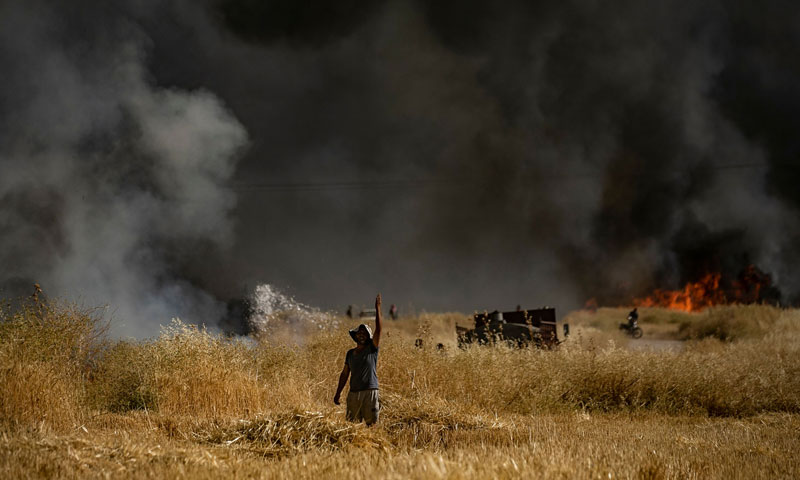
People extinguish a fire in an agricultural field in the town of al-Qahtaniyah in rural al-Hasakah – June 10, 2019 (AFP)
Policies as a prominent factor
A study by the Harmoon Center for Contemporary Studies titled “Agriculture: Syria’s Food Basket from Decline to Disaster,” published in 2017, also stated that the drought was responsible for the incidents between 2006 and 2008 up to 2011. However, “the truth is that the drought bears only a small fraction” of the responsibility.
According to the study, the larger part of the responsibility lies in the nature of the adopted policies and their economic orientations, along with inheritance laws that have contributed to land fragmentation, making many holdings too small to be viable for agriculture.
In addition, there is the nature of bureaucratic institutions’ relationships with farmers, in terms of obtaining seeds, fertilizers, and agricultural drugs, and mechanisms for receiving and classifying yields.
Political economy researcher Yahya al-Sayed Omar believes that the decline of the agricultural sector began in 2000, not in 2006 as some might think.
In an article, al-Sayed Omar stated that the rapid adoption of a social market economy policy led to a swift and unprepared liberalization of the Syrian economy, resulting in a decrease in material production and a rise in the services market, which affected agricultural production.
The decline in government interest in agriculture was reflected in several decisions during the drought period that required exceptional government measures, but the government instead made a series of negative decisions.
After 2011, Migration continues
Like other Syrian governorates, al-Hasakah was affected by the security and military situation, especially after 2012, which saw military control shift in favor of Kurdish parties led by the Democratic Union Party (PYD), while security zones in the cities of al-Hasakah and Qamishli remained in the hands of the Syrian regime.
The PYD formed the nucleus of the Interim Democratic Autonomous Administration in November 2013, which became the Autonomous Administration at the beginning of 2014.
Subsequently, the Autonomous Administration became the actual administrative controller and increased its control over the region administratively, militarily, and economically after defeating the Islamic State in Syria, whose last presence in Syrian villages, towns, or cities was in March 2019. This meant that the region experienced political instability, shifting controlling powers, military conflicts, and displacement.
All this was followed by a lack of effective solutions by the de facto authorities and, finally, a period of drought during 2020, 2021, and 2022, accompanied by fires that further burdened farmers after all they had endured.
Due to the drought, agricultural production in northeastern Syria decreased by 80% in 2022 compared to the 2020 season before the start of the drought, according to the American Al-Monitor website citing Mercy Corps, an organization specialized in disaster relief and managing the effects of conflict and climate change.
In previous years, for instance, wheat production in 2011 was about 3.85 million tons with an average local consumption of 2.5 million tons, allowing for an export surplus estimated at 1.35 million tons. In 2018, this sharply decreased to 1.2 million tons, covering less than half of local demand, according to a report by IMPACT Research and Development Organization in civil society.
Al-Hasakah and Raqqa are among the most important wheat-growing areas in Syria. Their production in 2011 was about 1.76 million tons or 45% of Syria’s total production. By 2018, this dropped to around half a million tons, constituting 42% of the total with a reduction rate of 71%.
In 2020, production in these two governorates increased with the improvement of the rainy season to about 1.1 million tons, with total wheat production across Syria rising to 2.7 million tons.
Farmers: Costs reduce production
Mohammad al-Khudair, a farmer from the countryside of Qamishli who owns 60 dunams typically planted with wheat in eastern Khabur, told Enab Baladi that the area of land cultivated with wheat in the region has significantly decreased, with production dropping to about half of what it was before 2011.
Al-Khudair explained that the decrease in production is due to several reasons, most notably the costs of agriculture, including water, fuel, and fertilizers. This has led some farmers to switch to less expensive crops like watermelon, cumin, or even rain-fed wheat instead of irrigated wheat.
Hamed Sultan, a farmer who owns agricultural land east of Khabur, also pointed out that the decline in wheat-cultivated areas is due to the lack of attention from the Agriculture Authority in supporting farmers and the low water levels in the Khabur River, alongside drought. This has pushed farmers towards aromatic plants such as cumin and black seeds, which do not require significant costs or labor.
Regarding the fires that have targeted wheat crops and spread widely in recent years, both farmers, Mohammad al-Khudair and Hamed Sultan, agreed that some of the fires were deliberate, with some being instigated by local residents themselves out of spite.
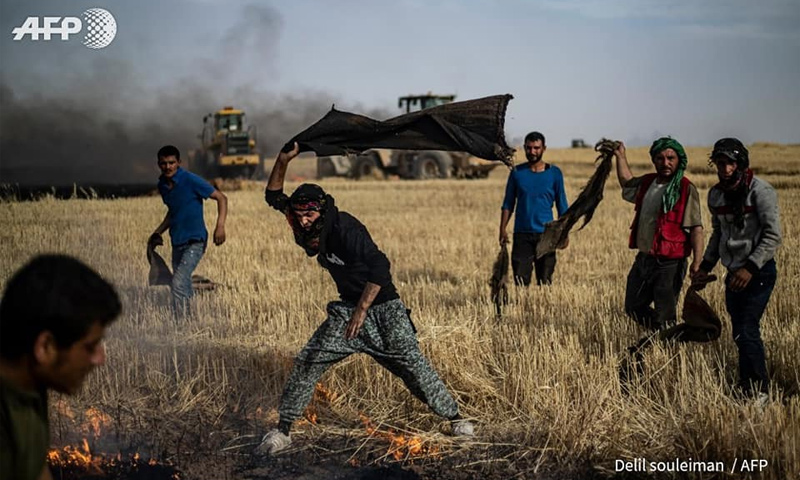
Young men try to extinguish fires that broke out in crops in the al-Qahtaniyah area of al-Hasakah province – June 10, 2019 (AFP/Delil Souleiman)
Policies exacerbating the problem
The policies of the Autonomous Administration in managing the agricultural sector have caused agriculture to decline “frighteningly,” starting from price instability and local community concerns about transactions in Syrian currency while agricultural inputs like fertilizers are sold in dollars. According to a study by the Harmoon Center for Contemporary Studies, this has hindered farmers from cultivating cotton.
Farmers in al-Hasakah province spoke to Enab Baladi earlier about a series of seasonal problems and challenges they have faced in recent years, causing some to consider temporarily quitting farming.
Among these problems are the high costs of plowing and the lack of mechanisms to regulate its fees, preventing tractor owners from exploiting farmers under the pretext of the deteriorating value of the Syrian pound, high fuel prices, and expensive spare parts.
Conversely, tractor and agricultural equipment owners told Enab Baladi that raising plowing fees is due to responsible authorities failing to provide necessary items like fuel at subsidized prices to make the process feasible for both parties (farmers and agricultural equipment owners).
In contrast, the Autonomous Administration periodically raises fuel prices without considering its impact on farmers, leading to increased agricultural costs for farmers, which has sparked protests in areas under its control.
Another issue is the delay by the Agriculture Authority of the Autonomous Administration in paying the dues of dozens of farmers for their supplied crops.
In the 2024 season, the Autonomous Administration was late in pricing agricultural crops despite farmers hoping for compensation for losses due to drought in previous years, exposing them to exploitation by wheat and barley traders.
Subsequent pricing was criticized by farmers who deemed it unfair and not consistent with costs.
Farmers in al-Hasakah province also face many challenges in preparing for agricultural seasons, especially rain-fed agriculture, with significant losses and debts depleting their “grain and financial savings” allocated for farming.
The Seed Multiplication Institution affiliated with the Autonomous Administration imposes “difficult” conditions to contract with farmers and supply them with seeds on credit at a subsidized price of 2300 Syrian pounds per kilogram, with 200 kilograms of fertilizer per hectare.
Contracts are granted exclusively to farmers with agricultural wells, with bonds of surety from contractors and prior cultivation licenses from the Agriculture Directorate. This makes it difficult for farmers relying on rainwater for irrigation (rain-fed farming) to obtain contracts from the Seed Multiplication Institution.
Exacerbating the situation, the Agriculture and Irrigation Authority banned farmers from drilling surface and deep agricultural wells in areas under its control from November 1, 2022, under the threat of “legal proceedings and seizure of drilling machines” under the pretext of “preserving groundwater reserves.”
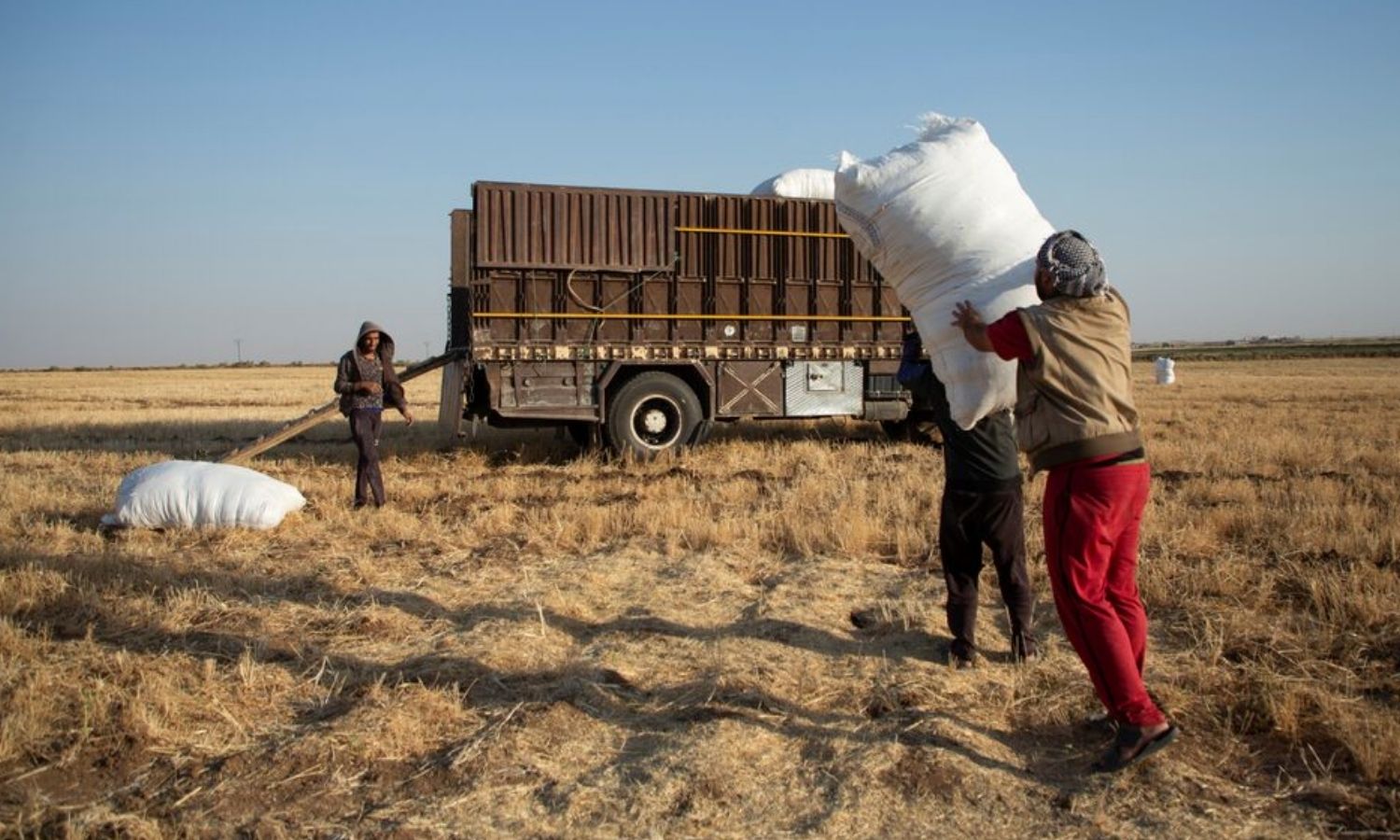
Workers carry a bag of hay to load onto a truck in a field in the countryside of Qamishli, northeastern Syria – June 30, 2022 (Reuters)
Pollution, fires, and water shortage
Additionally, oil pollution of the soil is a significant factor in the deterioration of soil fertility in the Syrian Jazira, according to a study by the Syrian Journal of Agricultural Research published in 2022.
Fires, especially in 2019 and 2020, consumed thousands of dunams of agricultural land before they could be harvested.
The Meteorological Directorate warned at the time of more fires due to the country being affected by a high-pressure system, with high temperatures and low humidity levels causing fires, especially as the harvest seasons approached.
According to what the Syrians for Truth and Justice (STJ) organization reported from Salman Baroudo, the head of the Economy and Agriculture Authority in the Executive Council of the Autonomous Administration in June 2019, fires consumed more than 450,000 dunams of wheat-planted lands between May 20 and June 14, 2019, in areas under Autonomous Administration control.
Parties exchanged accusations of causing fires in al-Hasakah. The Autonomous Administration accused Turkey of intentional bombing of fields and also accused the regime of causing fires as it competes with them for receiving wheat returns.
Meanwhile, the official Syrian news agency (SANA) reported from farmers that Syrian Democratic Forces (SDF) elements set fires as part of a policy of tightening control over residents to make them work and deal with it, preventing them from delivering their crops to regime government centers.
Additionally, the Islamic State group claimed responsibility for burning agricultural lands in Syria and Iraq, justifying this by labeling the owners as “apostates.”
The decline in water levels has significantly impacted agriculture in al-Hasakah, particularly the Khabur River, which originates from Turkish land, and its tributaries such as the Jaghjagh River and the Jarah River. This impact has extended to the entire Jazira region due to the decreased levels of the Euphrates River.
Al-Hasakah contains ten dams primarily distributed along the Khabur and Tigris rivers and their tributaries, including Southern al-Hasakah (Al-Basel), Eastern al-Hasakah, Jawadiyah, Mashuq, Bab al-Hadeed, Mansoura, Hakeemiyah, Jarahi, Jawadiyah, and Sefan.
The Autonomous Administration consistently blames Turkey for the shortage of dam and river water, especially the Euphrates River, since the rivers originate from Turkish territories, describing it as a “deliberate cut-off” of river water, leading to halting the operation of dams in areas under its control, such as the Tishreen dam.
Job opportunities affected, Recruitment as an option
Agricultural land represents both moral and material value for the northeastern Syrian community, particularly in this rural area. However, years of war have forced farmers to reluctantly disconnect from their land, with some even selling parts or all of it due to financial and security pressures. Some have shifted from crops they traditionally planted for years to more profitable ones.
The opinions of farmers interviewed by Enab Baladi living east of the Khabur River in the rural area of al-Hasakah province vary. Some believe that the poverty the region suffers from is part of a broader issue affecting Syrian provinces. Others tend to blame the Autonomous Administration and its military wing, the SDF, which control the region and manage the lives of its inhabitants.
In the town of Tal Hamis, east of the Khabur River, where most people live off their annual agricultural harvests, Salah, a former farmer and current SDF recruit, told Enab Baladi that he was pushed to abandon farming, which his family had been engaged in for years, due to water shortages and declining interest in agriculture. He turned to military work as his source of income.
Salah added that he, along with his brothers, joined the military sector over two years ago after suffering losses during the 2022 wheat season and the subsequent cotton season due to a lack of water.
Salah and his brothers chose military work due to the lack of job opportunities. According to him, the residents of Tal Hamis do nothing but farming. With the absence of agriculture, they had no choice but to volunteer with the SDF under a two-year contract, each earning a salary of 3.5 million Syrian pounds.
Deliberate policy or accumulation of problems
While some residents believe the Autonomous Administration forces them to leave their agricultural land by ignoring the provision of services, others in the agricultural sector attribute the issues to droughts and intermittent water shortages affecting the region.
Agricultural engineer Tarek al-Ayed, head of the agricultural guidance unit in al-Hasakah, told Enab Baladi that the drying up of the Khabur River has negatively impacted farmers on both sides of the river.
He added that water shortages lead to a decline in crop productivity and quality, making it difficult for farmers to secure water for irrigation. This forces them to use alternative methods that can be expensive or ineffective, such as digging wells, which are often illegal under local law.
The engineer pointed out that the danger of the Khabur River drying up during consecutive drought years lies in soil degradation and increased salinity, reducing its fertility.
Besides strategic crops like wheat, barley, and cotton, there were orchards and large areas planted with vegetables on both sides of the Khabur. However, these crops have significantly decreased over the past few years, with agricultural diversity in the region almost disappearing due to the lowered water levels in the Khabur River.
The engineer, who resides in the al-Hasakah province, said farmers are not only suffering from drought but also from insufficient fuel support, often unavailable. River water also needs engines and pumps to transport it to nearby lands, which are unavailable due to the lack of fuel support.
The farmer noted that the difficulty in water transportation has led many farmers to abandon the idea of agriculture as an economic project after enduring continuous losses over the years and the absence of any legislations or plans to support farmers on both sides of the Khabur River by the concerned authorities.
Fires, drought, water and fuel shortages, and deteriorating agricultural services have all posed obstacles for farmers, according to Salah, who spoke to Enab Baladi. However, the region’s residents always view these events as prolonged, aiming to push them to leave their lands.
World Bank data shows that in 2022, the percentage of workers in agriculture in Syria was approximately 15.5% of the total number of workers in all fields, while in 2000, it was about 32.89%.
Compensating for losses?
While the Autonomous Administration faces accusations from residents of neglecting the agricultural sector deliberately, the latter has addressed its efforts to compensate farmers. On August 26th, it announced that it plans to compensate farmers affected by fires in its controlled areas, alongside measures in the agricultural sector to support farmers.
The Agriculture Authority under the Autonomous Administration announced that it will provide wheat seeds for free according to the agricultural license for the 2024-2025 season.
This announcement came as part of the recommendations issued by the annual meeting of the Agricultural and Irrigation Authority of the Autonomous Administration. The meeting concluded with several outcomes, most notably the sale of wheat seeds through the Seed Multiplication Institution for the 2024-2025 agricultural season at a price of $225 per ton, alongside buying the cotton crop from farmers for the current agricultural season based on a price set at the beginning of September.
Gains for the Autonomous Administration
Samir al-Ahmad, a researcher specializing in northeastern Syria affairs at the Omran Center for Strategic Studies, told Enab Baladi that two years ago, it was possible to view the events as deliberate, especially given the scale of fires that affected agricultural crops in al-Hasakah. However, these fires have since decreased, while other influential factors have remained.
The researcher, who hails from al-Hasakah, added that the issue cannot be viewed as an attempt to impoverish farmers but rather as a pursuit of benefits without considering the farmers’ conditions by the region’s authorities (Autonomous Administration).
He pointed out that attempts to gain benefits can be noticed in some details, such as determining the price of wheat for the current season.
Last May, the Agricultural and Irrigation Authority of the Autonomous Administration set the wheat purchase price from farmers for the 2023-2024 agricultural season, causing protests in the region due to the low price.
According to the decision issued by the Authority at the time, the purchase price was set at 31 cents per kilogram, subject to standard grade criteria, while last year, it was set at 43 cents for the same quantity.
In response to the wheat price, farmers in Amuda organized a sit-in in the middle of the city to protest the Autonomous Administration’s decision to set the wheat price, and the protests extended to other towns and villages. However, the Autonomous Administration did not withdraw its decision.
Researcher Samir al-Ahmad noted that the Autonomous Administration seeks to maximize its benefits, even at the expense of farmers, as it has restricted the sale of crops to its agricultural institutions so it can resell them to other parties, often the regime and the opposition, to achieve profits.
Al-Ahmad also stated that this policy is not limited to wheat but also applies to other crops. For instance, some farmers planted cumin last year and managed to achieve good economic gains. This year, they planted the same crop, but security events in the region led the Autonomous Administration to close its land crossings with the regime, limiting the ability to export and trade these crops, causing traders’ profits to be halved.
Researcher al-Ahmad believes the crisis in northeastern Syria results from economic policies ensuring the Autonomous Administration large profit margins and high central control over all economic resources.
He added that the Autonomous Administration’s economic policy towards farmers might result in impoverishment in the region. Still, the economic situation of the population is not a key concern for the de facto authorities in Syria, including the Autonomous Administration.
Interventions may change reality
Food security at risk
The decline in wheat-cropped areas and the continuous policies of controlling authorities in Syria, in terms of not supporting farmers or compensating their losses in a way that ensures them a good profit return, raises questions about the future of the country’s food security.
Wheat is the primary strategic food in the Syrian food basket, involved in dozens of food products, mainly flour used to make bread.
Therefore, the declining wheat-cropped areas in northeastern Syria will negatively impact flour production, propelling the region and Syria in general towards greater import dependence. This implies a greater need for dollars to fund imports, and also signifies a decline in the value of the Syrian pound against foreign currencies, as economic researcher at the Omran Center for Strategic Studies Manaf Quman believes.
Quman added, speaking to Enab Baladi, that the impact will directly affect food security, and the results will be evident next year or the year after as the quantities of wheat received from farmers decrease, and strategic stockpiles dwindle.
In my opinion, the problem is not in food security but rather in managing food security.
Who benefits from fighting farmers on their agriculture? And who made such decisions that deter farmers and push them to leave their lands and avoid planting wheat? Didn’t they know these consequences?
Most of the problems Syrians now suffer from come from those managing the resources and issuing poor economic decisions.
Manaf Quman, Economic researcher
Dr. Salim al-Nabulsi, a professor of agricultural economics at Al-Zaytoonah International University, told Enab Baladi that the decline in wheat-cropped areas will lead to many risks and issues, the most notable being the regression of the agricultural reality in the region, which necessitates several measures and initiatives to improve this reality regarding soil, water, and production inputs.
This current decline will inevitably lead to a drop in self-sufficiency indicators, affecting the poor, children, women, and marginalized groups in society. This will increase the need for food support programs launched by humanitarian organizations.
According to al-Nabulsi, continuing the decline in the crop without governmental and communal interventions will lead to a rise in the prices of bread, flour, and their derivatives, thus distorting the societal security and peace system, which could eventually result in famine.
Given these circumstances, the region needs, as Dr. al-Nabulsi pointed out, effective programs to increase the wheat-cropped areas in both quantity and quality concerning varieties and amounts. This necessitates supported programs by governmental bodies and local and international organizations.
There is a significant need to support wheat farmers in various ways, starting with supporting production inputs such as tractors, plows, and high-yield disease-resistant seeds, as well as providing irrigation water and subsidizing fuel prices, especially for projects operating on artesian wells.
The latest governmental interventions involve buying wheat from farmers at preferential and supportive prices, ensuring the continued existence of farmers for many coming years.
It’s time in Syria to launch a project, program, or even a specialized organization in agricultural finance because capital returns are very slow in this type of crop. Through such a project, policies should be directed according to the region’s needs and food security indicators, according to Dr. Salim al-Nabulsi.
if you think the article contain wrong information or you have additional details Send Correction
النسخة العربية من المقال
-
Follow us :












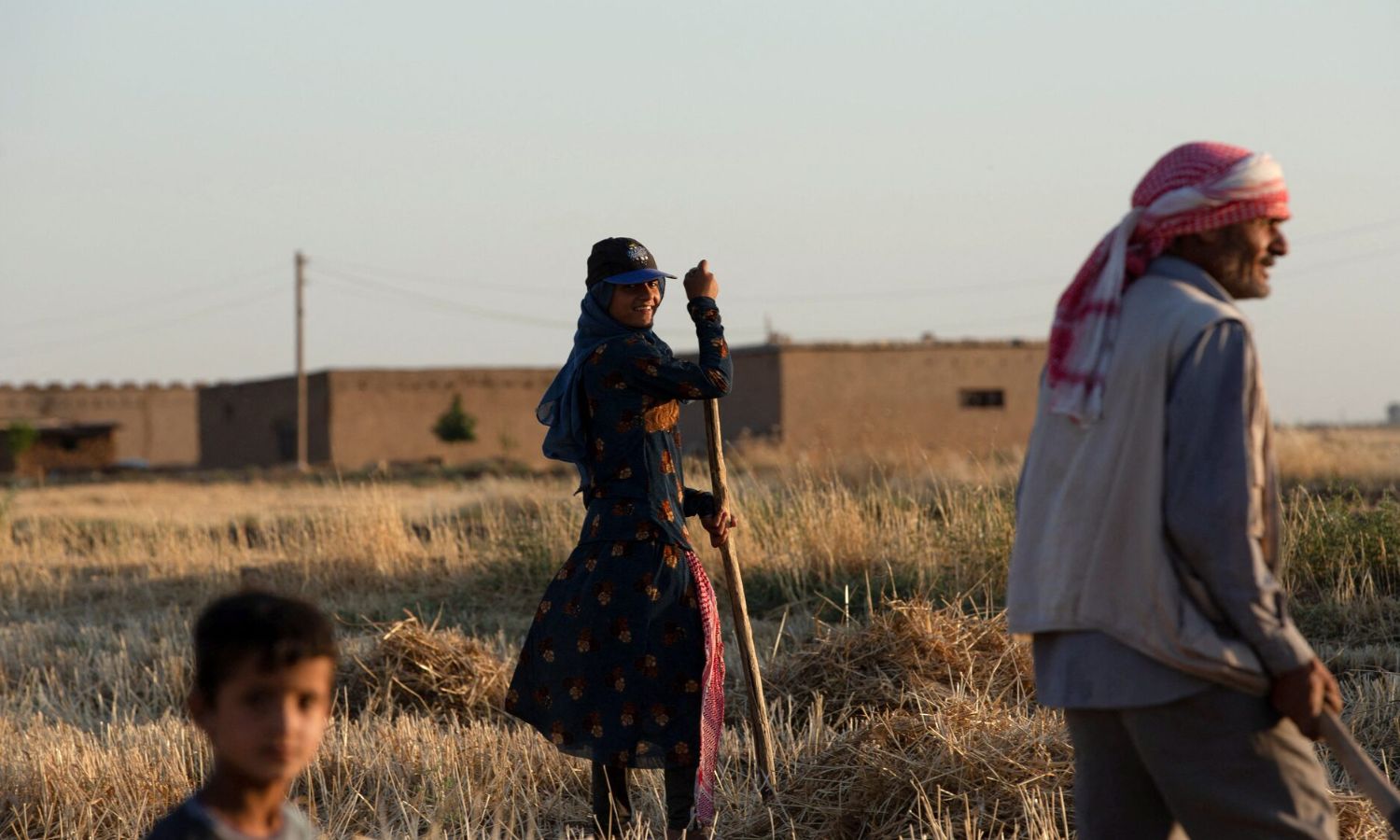
 A family collects hay from a field in the countryside of Qamishli in northeastern Syria - July 1, 2022 (Reuters)
A family collects hay from a field in the countryside of Qamishli in northeastern Syria - July 1, 2022 (Reuters)





 A
A
A
A
A
A

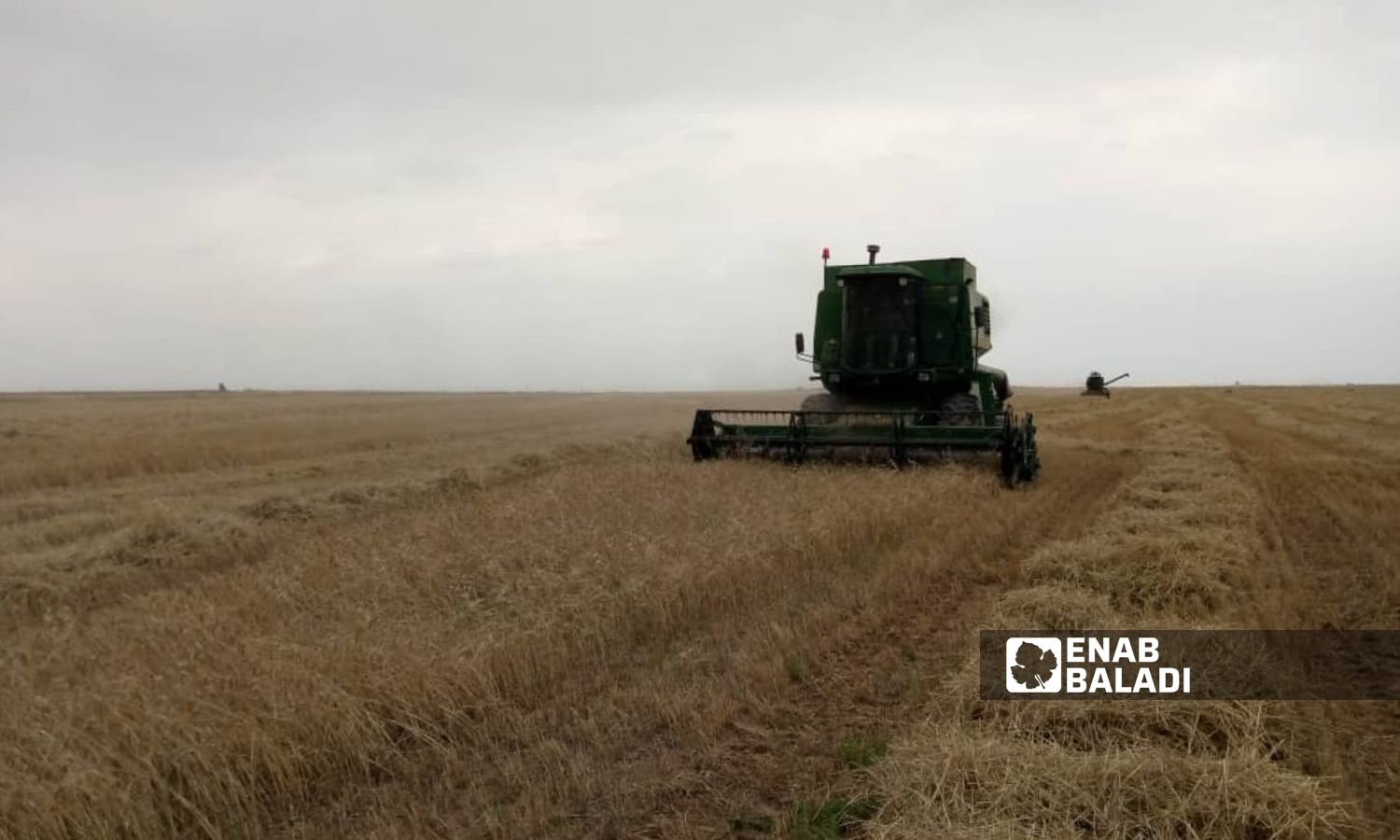


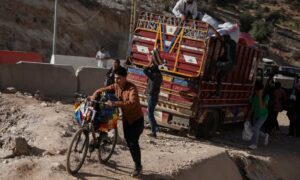
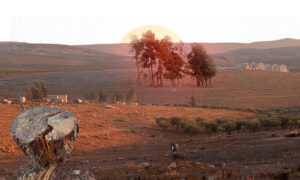
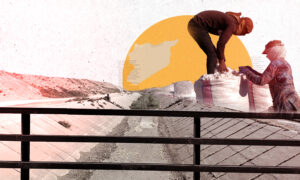

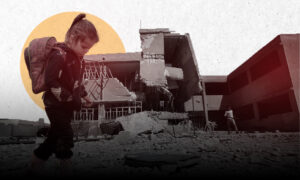
 More In-Depth
More In-Depth